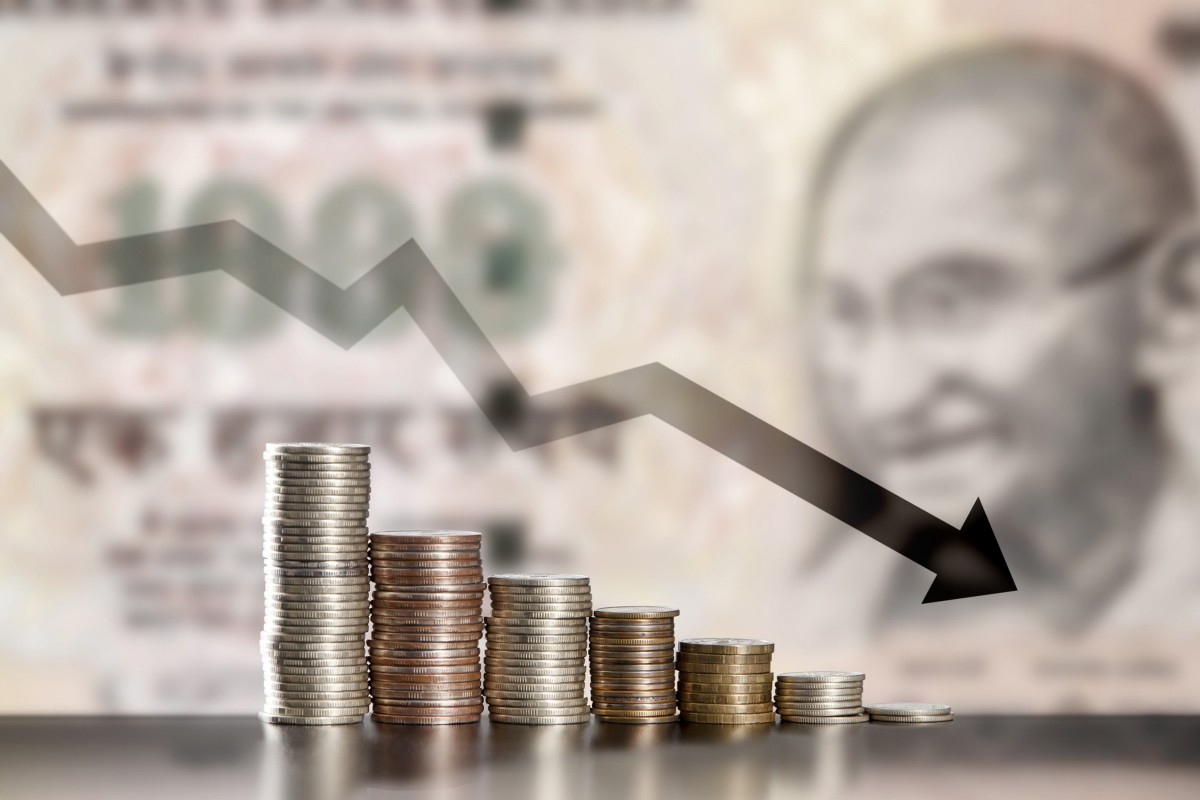Indian Rupee Meltdown To Lowest Level, Closes At 82.85 Against US Dollar
Indian Rupee Touches Lowest Level Since February, Closes At 82.85 Against USD

The major downturn of the Indian rupee since February was marked at 82.85 against the US dollar. The currency’s downward trajectory can be attributed to several factors that have impacted the Indian economy and global currency markets.
Downturn Of The Indian Rupee:
The central reason for the downturn of the Indian rupee is the higher value of the US dollar in the global market. This higher value of the US dollar can be attributed to its robust economic performance and the surging interest rates in the United States. Thus, creating a harbor for investors who, in turn, strengthen the dollar and put pressure on the emerging Indian rupee.
Furthermore, soaring crude oil prices have added to the rupee’s challenges. Being one of the crucial oil importers, India will be directly influenced by the changes in oil prices. Geopolitical tensions and oil supplies have caused the price of oil to rise recently, which has raised India’s import bill and contributed to the downturn of the country’s currency value.

The adverse effects of the COVID-19 pandemic, including localized lockdowns and disruptions of businesses, also impacted the rupee’s decline. The uncertainties surrounding the pandemic’s impact on India’s economic recovery have led to investor caution and a flight to safer currencies, contributing to the rupee’s depreciation.
Moreover, opinions of the global market and investor risk appetite have influenced the value of the rupee. In times of uncertainty and market volatility, investors are likely to retreat from sources that include high risk, including emerging market currencies. As one of the high-beta currencies, the rupee has been impacted by this risk aversion, leading to its decline against the US dollar.
Implications Of The Indian Rupee Decline:
The downturn of the Indian rupee has several implications for the Indian economy. On the positive side, a weaker rupee can benefit export-oriented sectors such as information technology (IT), pharmaceuticals, and textiles. These industries generate significant revenue in foreign currencies, and a depreciated rupee makes their products more competitive in international markets.
However, the negative consequences of a weaker rupee outweigh the positives as India still imports more commodities for itself compared to the exportation rates. Thus increasing the import costs to a higher value, especially for daily commodities like crude oil and machinery. This act of importing more goods will eventually lead to an increase in bill value, pressurizing India’s financial balances and international trade reserves. This, in turn, can impact the country’s macroeconomic stability and raise concerns about inflationary pressures.

The depreciation of the rupee also has implications for inflation within the country. A weaker rupee makes imports more expensive, potentially leading to higher prices for imported goods. This can have a cascading effect on domestic inflation, impacting the cost of living for Indian consumers.
The Reserve Bank of India (RBI) may undertake measures to stabilize the currency and manage its volatility in response to the rupee’s decline. These measures could include interventions in the foreign exchange market, adjusting interest rates, or implementing capital controls to regulate the flow of funds. The effectiveness of these measures depends on various factors, including market conditions and the overall economic outlook.
It is important to note that currency movements are influenced by a complex interplay of domestic and global factors, and they are subject to fluctuations in the short term. The rupee’s current position against the US dollar reflects the prevailing market conditions, and it can change in response to evolving economic and geopolitical developments.
Monetary Policies And Risk Of Inflation:
The current account balance represents the net flow of goods, services, and transfers between a country and the rest of the world. A depreciated rupee can worsen the current account balance, increasing the cost of imports while making exports relatively cheaper. This imbalance can impact the country’s overall trade position and pressure foreign exchange reserves.
A weaker rupee can contribute to inflationary pressures within the country. As the cost of imported goods increases, it can lead to higher prices for a wide range of products, including essential commodities. This can impact consumers’ purchasing power and erode their standard of living. These inflationary pressures may call for implementing monetary policy measures to manage inflation and maintain price stability.

While a depreciated rupee poses challenges, it helps in improving and growing the competitiveness of Indian exports. Industries such as information technology (IT), pharmaceuticals, textiles, and other export-oriented sectors benefit from a weaker currency. A lower rupee value makes Indian goods and services more affordable in international markets, undoubtedly increasing revenues and supporting economic growth.
The depreciation of the rupee calls for new monetary policies from the Reserve Bank of India. The rates might be regulated in such a manner as to manage inflationary pressures and stabilize the currency. These policy decisions have implications for the country’s borrowing costs, investment, and overall monetary controls. Currency depreciation can impact foreign investment in the country. The weaker Indian rupee would be understood as a spotlight for investors as a higher risk, leading to a decline in foreign direct investment (FDI) and portfolio investment. This can have implications for capital inflows, crucial in financing India’s economic development and growth.
Proofread & Published By Naveenika Chauhan




